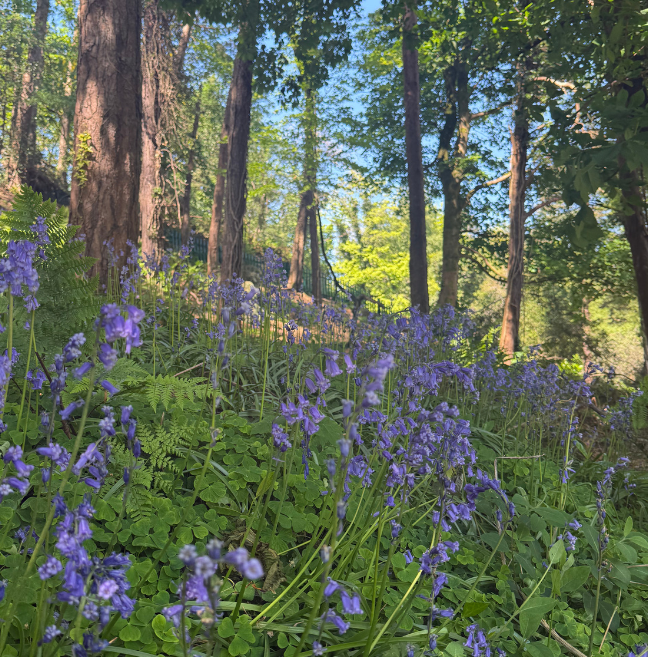
Restoring our Woodlands
To help plants, animals and fungi, we are removing invasive alien species from our woodlands.
Yet, Northern Ireland ranks among the least-wooded regions in Europe, with only 8.7% woodland cover compared to the European average of 37%. Most of our woodland is non-native conifer plantation, only a very small proportion – around 1% of total land area is native or semi-natural broadleaf woodland.
Invasive Alien Species
Plants like Cherry Laurel and Common Rhododendron were first brought to Ireland around 200 years ago and have since taken over large areas of our countryside. The thick layers of bushes we are cutting out block light, stifle trees and ultimately stop the next generation of trees coming through. Wildlife struggles as food sources decline, the plants are difficult to move through and many of their leaves are toxic to other plants, animals and fungi.

Restoration plan
Over the next few years, the initiative will result in the planting of over 2,500 trees, focusing on the restoration of native trees, shrubs and flowers to help strengthen the local ecosystem.
The first phase of replanting is already underway, with 550 trees being planted within approximately 3 hectares of woodland. The replanting has taken place following a three-year clearance project which saw the removal of approximately 1,290 tonnes of invasive alien species Cherry laurel and Common rhododendron, which had taken over the woodland, stifling the growth and survival of native species.

In some areas, nature will take care of the regrowth itself, but the Woodland Trust will provide advice to National Museums NI on management of the land to ensure that native plants, rather than non-native species like beech and sycamore, are given priority. The maintenance of invasive alien species removal will also be an ongoing aspect of this restoration work to ensure long-term success.
As we work in the woodland, we may find dead or diseased trees which have to be removed as well.

This work has been carefully timed to reduce the impact on birds and any other species nearby. While this work slightly disturbs the habitat initially, it saves it from being destroyed by invasive species. Restoration plans are in place to replant native species in order to help the landscape recover.
Sustainability
This project aligns with National Museums NI’s commitment to environmental sustainability while directly supporting Woodland Trust’s mission to protect and restore Northern Ireland’s ancient and long-established woodlands for generations to come.
The restoration work is being closely supported and monitored by CEDaR (Centre for Environmental Data and Recording). Based within the curatorial department of National Museums NI, CEDaR plays a vital role in documenting Northern Ireland’s wildlife.
Success
We’re already seeing encouraging signs of recovery – native flora returning, bird, mammal and invertebrate populations increasing – all pointing to a healthier, more resilient woodland. In the face of the biodiversity and climate crisis, this project is a reminder that nature can bounce back when given the chance. It’s a hopeful signal of what’s still possible.
This is an ongoing project and we'll be documenting our progress as we go, stay tuned for more information and behind the scenes stories!







